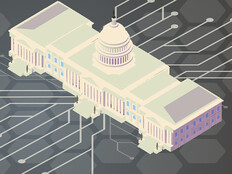Nation-State Threats Call for Enhanced Cyberdefenses
The recently disclosed breach of the Treasury Department by suspected Chinese state-sponsored hackers is just one example of more frequent and advanced cyberattacks on the public sector.
Agencies have the responsibility to protect themselves, individuals and organizations, especially those industries falling under the umbrella of critical infrastructure. A successful attack on an agency or organization within healthcare, utilities, transportation or telecommunications could have a chain reaction across the country.
Considering the increase in cyberthreats resulting from geopolitical tensions, agencies need new cyber tools that enable the federal cyber workforce to see all potential blind spots and respond quickly. Given the cyber talent gap in government, AI should be leveraged as a solution.
Fighting AI-Enabled Attacks With AI Monitoring
Today’s cyberattackers operate at a threshold that can be very difficult to detect. You need to use AI to fight AI, as the technology helps threat actors improve their tactics and speed in everything from spear phishing to sophisticated diversionary attacks.
Federal cyber professionals can leverage AI to be more effective in their roles, especially as departments and programs are being restructured. AI can handle mundane tasks such as traffic and threat monitoring while giving security teams more time to focus on the higher-level tasks of investigation and strategizing around advanced threats.
AI can also spot vulnerabilities, patterns and trends that could easily be missed by human analysts. Having the ability to monitor vast networks for anomalies enables security professionals to prioritize the most critical threats in real time.
RELATED: Artificial intelligence-powered threat detection takes the burden off cyber analysts.
There’s No AI Innovation Without Public-Private Partnerships
AI has long been a part of cybersecurity, but newer forms such as generative AI and agentic AI are redefining the way the technology can improve your agency’s cyberdefense posture. AI is now an essential component of a modern network defense because it enhances visibility of threats coming in or already in the network that may have bypassed perimeter controls.
Continued AI innovation will solidify the government’s proactive, adaptive security posture. Expect to see more widespread integration for activities such as threat intelligence and hunting, establishing more frameworks, and improving red team exercises. Agentic AI will further help formulate threat responses with greater efficiency.
Agencies looking to adopt AI will require help from the private sector, which is leveraging the technology faster. In its 2024 Global Cyber Confidence Index, ExtraHop found that 38% of security decision-makers said using AI and machine learning to manage and mitigate risk was a top priority for their organization this year.
The private sector will likely play some sort of role in national security activities as AI applications continue to mature. Public-private partnerships are also essential to information sharing, conducting case studies on AI’s success, and innovating solutions unique to agency challenges and long-term goals.











